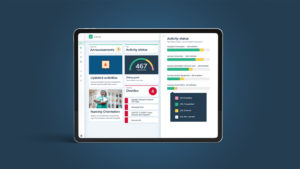Authored By:

Not everything you know about how we learn is true. In fact, many myths about learning have been proven wrong, but they are so ingrained in our culture that people continue to believe them as truth.
Myth #1: We get faster, better results when learners are actively engaged.
The thought that people learn more when they are ‘actively engaged’ in learning, which some define as dragging, clicking or hovering over something to access information – like an online course – isn’t true. This type of interaction can actually take focus away from learning.
The truth is, to successfully engage learners and strengthen their retention of content:
- Give learners challenging tasks so they process (apply) what they are learning.
- Make the content relevant to the learner.
- Ask questions that help validate understanding.
This approach forces learners to focus on the content and use more of their mental (cognitive) capacity, helping them to retain what they are learning.
Myth #2: Pre and post-training exams prove knowledge is retained.
Many believe it is important to evaluate retention of knowledge with exams before and after training has occurred. They wrongly believe a test after the course successfully measures retention. Unfortunately, short-term memory is the only element being tested in these situations. These evaluations do not measure what was retained after a week or whether learners applied what they learned or changed behaviors.
People learn best if they are trained and tested in application of the information, not in recognizing or repeating information correctly.
If you really want to find out if someone has learned something, a different approach is needed, including doing all of the following:
- Pre- and post-course evaluations to measure increases in knowledge
- Interviews with the learner’s managers or leadership to identify observed changes in behaviors or knowledge
- Retesting after a week or more can help measure retained knowledge
Myth #3: What is presented is learned.
We naturally assume that people are paying attention during presentations and that they retain what was presented. We also assume they apply that gained knowledge at a later point in time. It would be wonderful if this were true!
Even when people remember the content if they are asked about it, there is a good chance they do not remember it when they get into a situation where they should use what they learned.
So how do you help people retain information?
Start by defining what you want people to do after the training. Use methods such as action mapping (Cathy Moore), design thinking or other methods to break down and find out what knowledge gaps or behaviors need to change. From there, offer guidance to help learners apply what they learn and offer ongoing support.
Having the right mindset when it comes to successful professional development not only helps to ensure your training program meets individual needs, it also puts your organization on the right track for developing life-long learners. What’s more, Dossier’s competency management platform was built to help facilitate learning and skills tracking every step of the way. By aggregating millions of learning requirements on one user-friendly dashboard, Dossier makes it seamless to have complete visibility of individual competencies and organizational progress. So, you can rest assured that staff across every department have the tools at their fingertips to learn in the best way possible.
Sources
Clark N. Quinn, 2018, Millennials, Goldfish & Other Training Misconceptions: Debunking Learning Myths and Superstitions, Association for Talent Development
Cathy Mooreon Action mapping: https://blog.cathy-moore.com/action-mapping-a- visual-approach-to-training-design /
Harold Stolovitch, 2011, Telling Ain’t Training, Association for Talent Development




